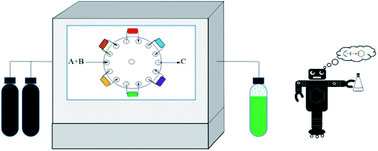Digitising chemical synthesis in automated and robotic flow
Abstract
Continuous flow chemical synthesis is already known to have many attributes that give it superiority over batch processes in several respects. To expand these advantages with those from automation will only drive such enabling technologies further into the faster producing, more efficient 21st century chemical world. In this report we present several examples of algorithmic chemical search, along with flow platforms that link hardware and digital chemical operations on software. This enables organic syntheses to be automatically carried out and optimised with as little human intervention as possible. By applying such enabling technologies to the production of small organic molecules and pharmaceutical compounds in end-to-end multistep processes, a range of reaction types can be accessed and, thus, the flexibility of these single, compact flow designs may be revealed. Automated systems can allow several reactions to take place on the same setup, enabling direct comparison of reactions under different conditions. Moreover, the production of new and known target compounds can be made faster and more efficient, the recipes of which can then be stored as digital files. Some of the automating software has employed machine-powered learning to assist the chemist in developing intelligent algorithms and artificial intelligence (AI) driven synthetic route planning. This ultimately produces a continuous flow platform that can design its own viable pathway to a particular molecule and then carry it out on its own, allowing the chemists, at the same time, to apply their expertise to other pressing challenges in their fields.



 Please wait while we load your content...
Please wait while we load your content...